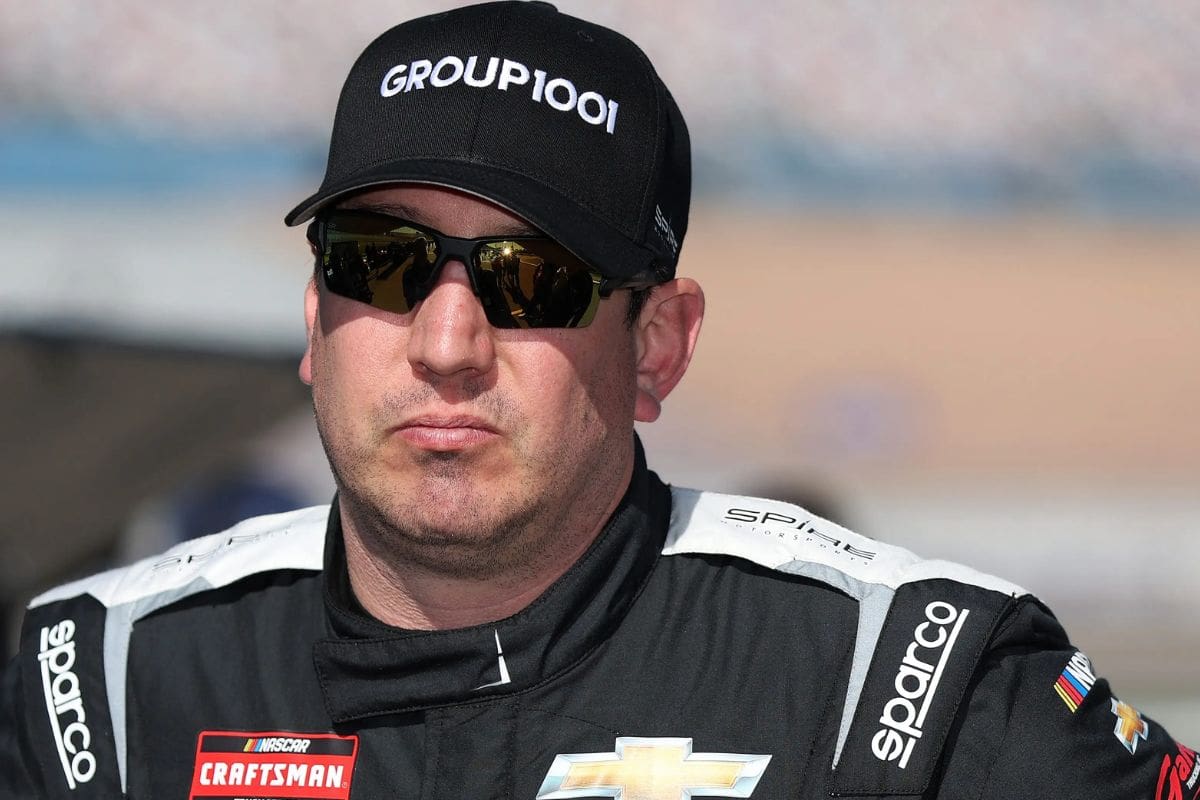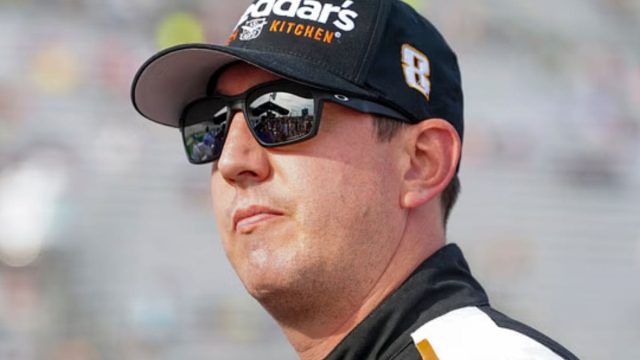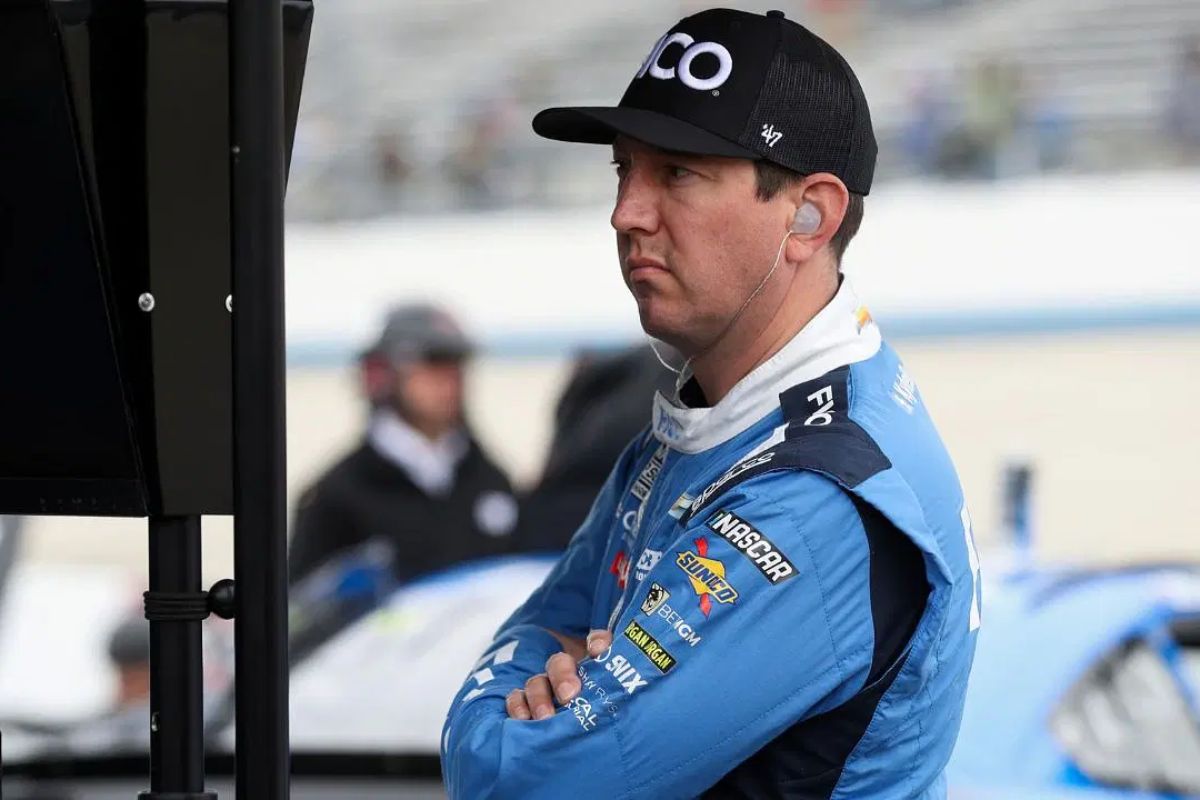Kyle Busch and Brad Keselowski’s Overtime Clash: Kyle Busch‘s instinctive reaction to Brad Keselowski‘s overtime strategy highlights the thin line between tactical brilliance and reckless decision-making in NASCAR. His response, “What the Fu*k,” not only reflects personal frustration but also emphasizes a larger narrative about the unpredictable dynamics of racing. As drivers grapple with split-second choices that can dramatically alter race outcomes, the implications of Keselowski’s actions raise questions about sportsmanship and race strategy. What does this incident reveal about the challenges drivers face, and how might it influence future races?
Key Highlights
- Kyle Busch expressed frustration on social media after Keselowski’s unexpected slowdown during the overtime restart, calling out his reckless driving.
- The incident led to a collision that hampered Busch’s race and created chaos in the final laps.
- Busch’s tweet, “What the Fu*k,” highlighted the emotional intensity and unpredictability of NASCAR racing strategies.
- Keselowski attributed his performance issues during the race to engine problems, providing context to his actions.
- The collision affected Busch and altered the overall race dynamics for other competitors.
Kyle Busch’s Mixed Emotions After Michigan Race
Navigating the complexities of his performance, Kyle Busch exhibited a blend of satisfaction and frustration following the FireKeepers Casino 400 at Michigan International Speedway. Although he secured his initial top-five finish since April, the lingering 45-race winless streak casts a shadow on his recent achievements.
Despite demonstrating commendable pace and leading 24 laps, the driver of the No. 8 Chevy found it challenging to temper his disappointment with the realization that playoff prospects are dwindling.
Busch’s performance presented a dichotomy; the engine of his Richard Childress Racing team displayed the vigor that had often eluded him throughout the season, yet the absence of a victory left an unsettling aftertaste. Leading a considerable portion of the race highlights his undeniable talent, yet it also emphasizes the frustration of not capitalizing on that speed when it mattered most.
The competitive nature of NASCAR demands not just pace but also consistency and tactical execution, elements that Busch has grappled with this season.
As Busch reflects on his performance, it is evident that the path toward reclaiming his former dominance will require not only skill but also resilience in the face of adversity.
Busch Calls Out Keselowski on Social Media
Following a incident during the overtime restart, Kyle Busch took to social media to voice his discontent with Brad Keselowski’s reckless driving. The incident occurred as Keselowski, driving the No. 6 Ford Mustang, slowed unexpectedly while approaching Turn 1, causing a collision with Busch’s No. 8 Chevy.
This move not only hampered Busch’s race but also instigated chaos throughout the field, emphasizing the inherent risks associated with such tactical decisions in such situations.
Busch, known for his frank nature, did not hold back in his criticism. His comments reflect a broader concern within the racing community regarding the implications of Keselowski’s actions.
The decision to slow down in a critical moment raises questions about judgment and highlights the fine line drivers must navigate between aggressive tactics and safety. Busch’s reaction serves as a reminder of the demands that drivers face, particularly during overtime restarts when every position is fiercely contested.
Busch’s Fiery Response and Keselowski’s Explanation
Kyle Busch’s intense reaction to Brad Keselowski’s actions during the overtime restart emphasizes the notable pressures and emotional intensity of NASCAR racing. His tweet, questioning, “What the fu*k was the 6 doing?!” reflects not only his frustration but also the competitive stakes involved. Keselowski’s tactic had broader implications, impacting not just Busch but also altering the race path for William Byron, ultimately allowing Tyler Reddick to seize victory.
#NASCAROvertime in Michigan.
This is how it went down. pic.twitter.com/osFwY1LXkR
— NASCAR (@NASCAR) August 19, 2024
The incident highlights the complexity and unpredictability of race strategies. While Busch’s response was immediate and visceral, Keselowski provided a more measured explanation post-race. He cited engine issues that hindered their performance, stating, “We were probably that fourth or fifth-place car.” This admission reveals an underlying layer of strategy and misfortune that often defines racing outcomes.
“We just had a couple of issues today with the engine shutting off. It was frustrating, but it was just part of our day. We were probably that fourth or fifth-place car, and the way the race played out, [Reddick] got by us, and he was really fast. He deserved to win the race.” – brad
The contrasting responses from Busch and Keselowski demonstrate the divergent perspectives within the sport. Busch’s emotive retort captures the heat of competition, while Keselowski’s rationalization emphasizes the inherent unpredictability of racing dynamics. This interplay between emotion and strategy is a fundamental aspect of NASCAR, shaping both individual careers and the sport as a whole.

Busch’s Frustrations Run Deeper
Beneath the surface of Busch’s visible frustration lies a more profound discontent rooted in his current season’s course. While the overtime restart incident involving Brad Keselowski provided a focal point for his ire, the underlying issues extend far beyond a single race.
Busch’s performance, marked by a frustrating lack of victories, reflects a broader struggle within Richard Childress Racing. Despite achieving their best results in months and executing a commendable pit stop strategy, the reality remains glaring: Busch’s playoff hopes hinge on a win, and time is running out.
With only two races left in the regular season, the urgency intensifies. Each race serves as a reminder of his season’s shortcomings and the mounting stress to secure a victory. The paradox of improved car performance juxtaposed with stagnant results creates a dissonance that fuels Busch’s frustrations.
Even as he acknowledges progress, the relentless pursuit of success weighs heavily on his psyche. Moreover, the competitive landscape of the Cup Series further exacerbates his discontent. The need to capitalize on fleeting opportunities amplifies the stakes, transforming each race into a critical crossroads for his championship aspirations.
In this situation, the mere acknowledgment of a step in the right direction feels inadequate. As Busch navigates the complexities of his current season, the frustration becomes representative of a deeper longing for redemption—a desire not just for better finishes, but for the clarity that comes with victory.
Kyle Busch’s Fourth Place Boosts Morale
Although expectations were low for Richard Childress Racing heading into Michigan International Speedway, Kyle Busch‘s performance exceeded those modest projections, culminating in a commendable fourth-place finish. Given the team’s struggles throughout the season, characterized by a troubling eight DNFs between its drivers, this result can be deemed a notable overachievement and a demonstration of the team’s resilience and tactical expertise.
Busch’s post-race remarks reflected a keen awareness of both his car’s capabilities and the competitive landscape. Acknowledging that his No. 8 Chevrolet may not have possessed the raw speed to contend for victory, he noted that strategic track position played a crucial role in achieving a top-five finish. This insight highlights the importance of race strategy, particularly during key moments such as the final pit stop orchestrated by crew chief Randall Burnett. The decision to optimize pit timing allowed Busch to momentarily lead the race, showcasing the potential that exists within the team’s framework when executed effectively.
“That was definitely maybe a little overachieving. Felt like a couple guys behind us were a little faster. We were probably about a sixth, seventh-place car there at the end but we had the track position on them, so we held them off and was able to get a spot there on that final restart. Good day for the Lucas Oil Chevrolet and everybody on this RCR team.” – Busch
This fourth-place result serves as a vital morale enhancer for Busch and Richard Childress Racing. It demonstrates that, despite earlier setbacks, the team can still secure competitive outcomes when circumstances align favorably.
As Busch reflects on this performance, it provides a foundation for future optimism, suggesting that even amidst a challenging season, the right decisions can yield success, fostering a renewed sense of confidence as they move forward in the series.
News in Brief: Kyle Busch and Brad Keselowski’s Overtime Clash
The confrontation between Kyle Busch and Brad Keselowski following the Michigan race highlights the complexities of racing strategies under stress. Busch’s frank reaction emphasizes the emotional toll that decisions can impose on drivers, revealing the thin line between tactical navigation and reckless behavior. This incident not only reflects individual frustrations but also raises questions about the ethics and safety of aggressive racing tactics, accentuating the unpredictable dynamics that define the sport of NASCAR.
ALSO READ: Kyle Busch’s Major Decision Regarding Adelaide 500 Just Days Before the Event


